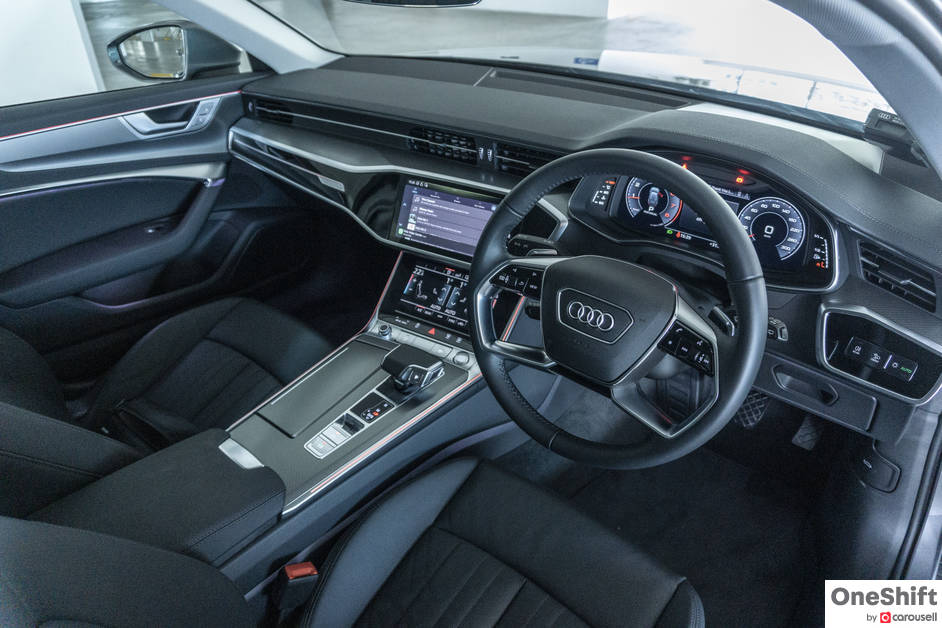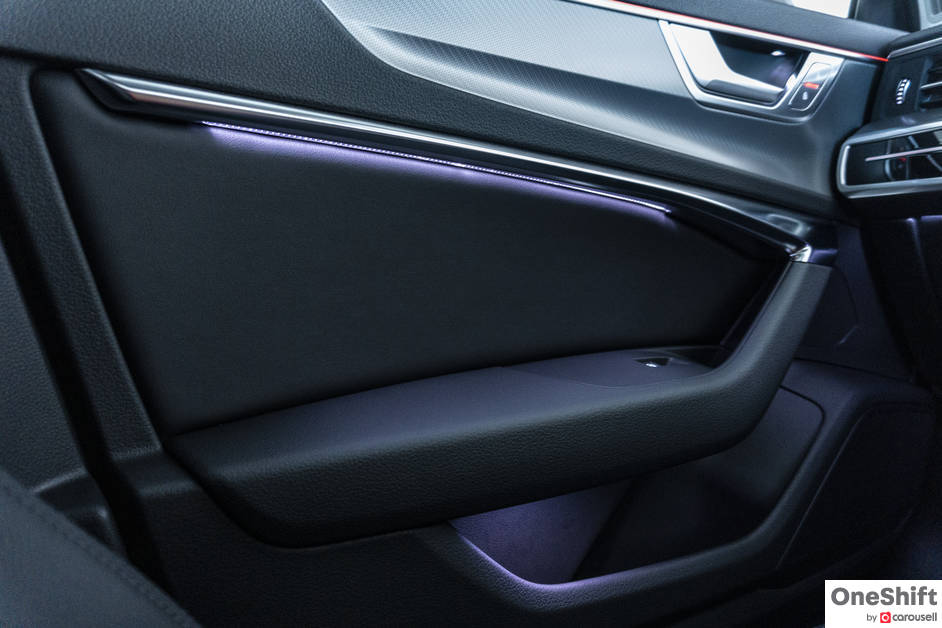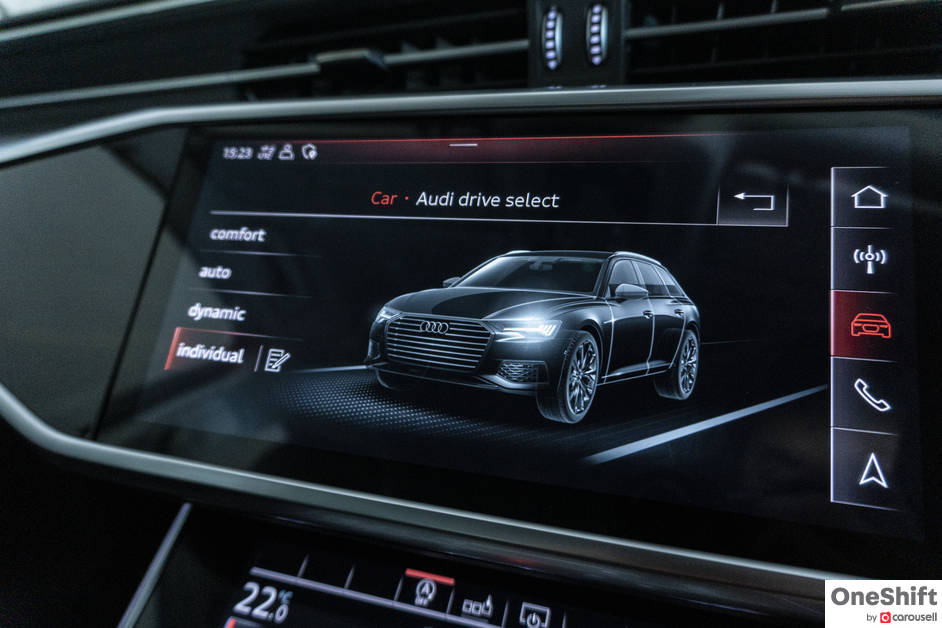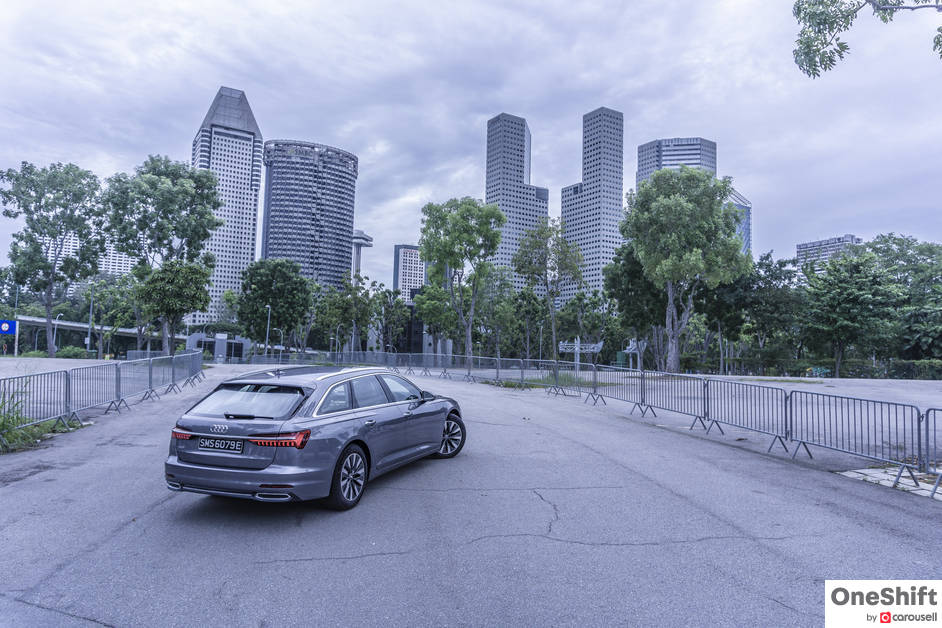Vaulted Express
Audi has always been making great station wagons. Now equipped with the entry-level B-cycle engine, does the new C8 Avant live up to expectations?


Audi is synonymous with stylish and practical wagons called ‘Avants’. The first ever Avant was the Audi 100 Avant which launched to the market in 1977. It changed the impression of wagons from being merely commercial vehicles to something that can be leisurely, even sporty.

43 years later, the C8 A6 Avant carries the baton on from seven generations that came before. Audi is keen to stake its claim in being the benchmark wagon manufacturer amongst the competition and thus is offering the C8 Avant at an attractive, entry-level price point as a single variant but with premium features.

The C8 Avant is wider (+12mm), taller (+147mm) and has a slightly longer wheelbase (+12mm) versus the C7 Avant. It now has pronounced blisters on its side profile that hint back at the Audi Quattros of old, nevermind that this particular C8 Avant variant is only front-wheel driven. The single-frame grille is stretched wide and low, and there is a chrome strip that runs between the rear lights.

It all comes together rather well, if a bit clinically, although the lines are certainly more interesting to look at than they were before. They are less straight and more organic. There is not really a bad angle to this car, neither is there a particularly good one. What unravels the look though is the 18-inch rims, which don’t look flattering on the car neither on looks nor size.

But Audi is really about the subtle things. A feature one may miss easily is a little washer mounted on the reverse camera. This is to make sure you have a clear view always while reversing, as the camera may be easily soiled due to the Avant shape. Thus, all Audi Avants are equipped with this obsessive but rather cool feature. Also another innovation unique to Audi that’s on the C8 Avant is how the rear windscreen wipers have integrated washers in them, so the water does not momentarily splash over the screen while being sprayed.

Audi went ultra futuristic with the interior and did away with most buttons. There are now two touch screens stacked on top of each other (10.1” and 8.6”) and a 12.3” virtual cockpit that all come as standard. From these screens via the MMI, one controls most functions of the car. The touch screens come with haptic feedback and are made of Gorilla Glass. Aside from being prone to fingerprint marks, the MMI is pleasantly easy to use especially if you are coming from a smartphone. There is a 3D camera view and true to Audi’s attention to detail, the graphic of the car even mimics something as minor as a turn signal. However, sometimes to adjust something simple one needs to dive deep into the menus and then it may get confusing.

A number of vehicle settings on the C8 Avant can now also be controlled via the myAudi app, with a couple of new functionalities added since end-2019. These include remotely locking the doors, checking the vehicle’s parked location or putting on a geofence alert.

Besides the digital aspects, the interior upholds Audi’s tradition for high-quality. It is a sombre environment, but materials feel expensive and hard-wearing. If Lexus’s ES was like Singapore Airlines’ Business Class, the C8 Avant’s interior reminds one of Tony Stark’s underground laboratory especially if you tweak the ambient lighting right. If you are a fan of that flavour of luxury, nobody does it better than Audi.

It also felt like the build quality was engineered by Stark himself. The C8 Avant uses an updated version of the C7’s chassis called the MLB Evo. If it’s any indication, the other Volkswagen Group siblings using this platform includes the Bentley Bentayga, Lamborghini Urus and Porsche Cayenne. It shows from the moment you close the doors - the sound, feel and weight is reassuring. Interestingly, because they open and close electronically, they integrate a safety feature that prevents them from opening when the car detects a cyclist or pedestrian passing by.

The highlight feature of the C8 Avant is of course the boot. Unsurprisingly, it is well-designed with a low sill for easy loading and unloading. There is also a hidden compartment underneath the boot cover to keep more items, as well as an adjustable rail system where one can adjust four variable lashing points. If there is one drawback I noticed, the sloping rear windscreen does eat into the space somewhat if you are carrying bulky items compared to a more squarish rear.

The 2.0 TFSI is the only engine available for the local market C8 Avant and comes with a B-cycle combustion process which allows for part-load during moderate driving. Without going too much into the details, in practice, the engine has a characteristically relaxed response and a very strong mid-range. Because of this, at times it’s not easy to drive smoothly in the car. It encourages the driver not to be in a hurry as the car seems to take a while to transition between partial load and full load.

This seems to pair well with the progressive steering which starts off very light. It doesn’t give much feedback of the road at all even in Dynamic, but at speed, it firms up to a level where one would feel very comfortable driving the car for hours on end. On the highway is where the car finds its sweet spot, with its extremely quiet road manners and rock solid roadholding making it feel a bit like an express bullet train. Adaptive suspension comes as standard, which gives a very comfortable ride in all modes, possibly enhanced further by rims with very large sidewalls (225/55 R18). The car always leans towards comfort so even in the most sporty setting the chassis hardly feels like it has been utilised to its full potential.

Something that I penned down in my notes twice is how sensitive the brakes felt. They seemed overservoed and difficult to modulate.
The C8 Avant is built on a wonderful MLB Evo platform and it shows in its low NVH levels, superlative build quality and impeccable road manners. It is typically Audi in terms of its steering and overall handling characteristics; it won’t make your day, but it is pleasingly fuss-free. However, I think the B-cycle engine does feel more of a compromise than anything else as efficiency-wise, it did not do fantastic either with an average consumption as tested of about 10.8 km/l. I think if the car was equipped with the higher output 2.0 TFSI without B-cycle technology, it would make a more complete package.

Credits: James Wong








Get the Best Price for your used car
from 500+ dealers in 24 hours

- Convenient and Hassle-Free
- Consumer Protection
Transparent Process
With No Obligation








